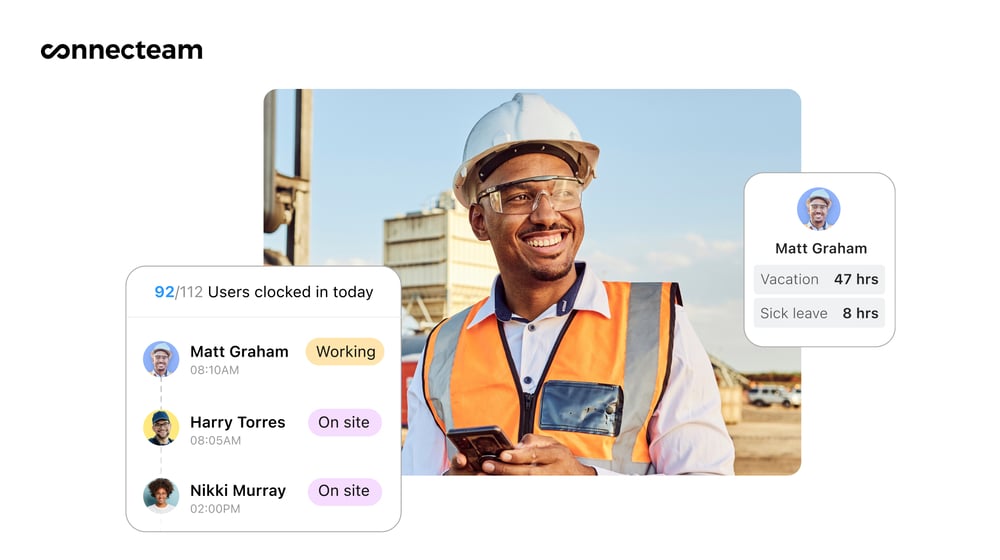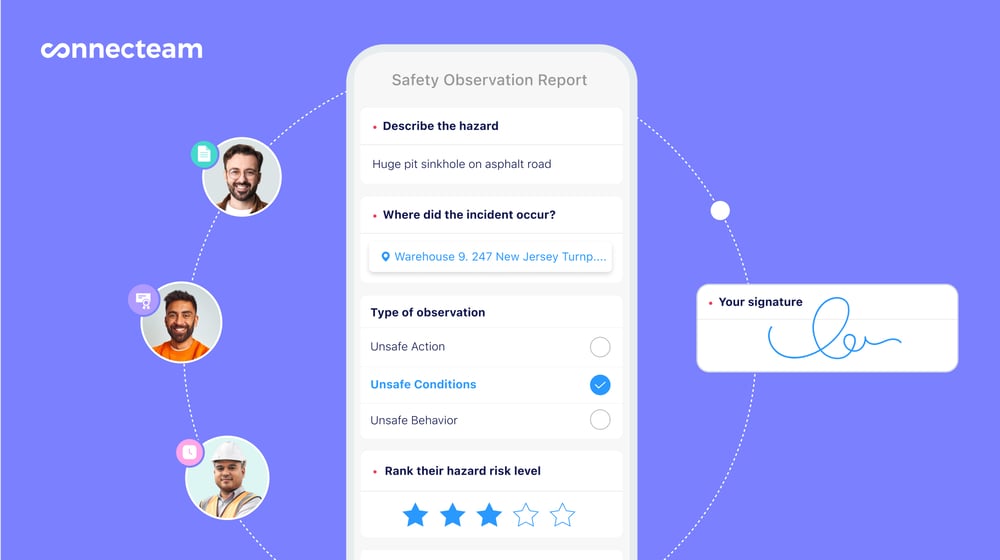Growing your construction business is key to staying competitive. Growth helps you take on bigger projects, reach new customers, and make more money. In this guide, we explain how to grow your construction business using 10 essential strategies.
Expanding your construction business can open many doors: bigger and higher-stakes projects, a larger customer base, and the potential for a boost in revenue. But understanding how to grow your construction business takes effort—and you may not even know where to start.
Growing as a company requires you to juggle multiple priorities—including supply chains, cash flow, and industry regulations—while continuing to meet current project goals and satisfy your existing customers.
That’s why we’re here to lend a hand. In this guide, you’ll learn how to grow a construction business by following 10 essential strategies. Let’s dive in!
Key Takeaways
- When you know how to grow a construction company effectively, you can secure higher profits, happier clients, and lower operational costs.
- Construction firms can experience a lack of growth due to a combination of high operational costs, unsuccessful marketing, poor project management, and other factors.
- You can grow your business by targeting new markets, securing repeat business, exploring new supply chain options, over-delivering on projects, and more.
- Specialized construction management software like Connecteam can help you keep your business running smoothly at all stages of growth.
What’s Stopping Construction Companies From Growing?
Before discussing how to grow a construction company, let’s explore what prevents growth.
Common causes leading to stagnating profits and company size include:
- Macroeconomic factors, such as recessions.
- Slow or prohibitive processes relating to planning and permits.
- High operational costs, including supplier fees.
- Ineffective project management, leading to delays and low-quality results.
- Unsuccessful sales and marketing campaigns.
- High employee turnover.
- Poor communication with clients and team members.
- A lack of compliance, including with health and safety regulations, which increases legal and reputational risks.
- Not adapting to specialized technology that can increase efficiency.
Knowing what prevents growth helps construction business owners identify their specific challenges and choose the best strategy to expand their company.
How To Grow a Construction Business: 10 Strategies
Here are our top strategies for taking your construction business from small-scale to high-growth.
Secure repeat business
Selling to existing clients is often easier and cheaper than securing new ones, and it’s a great strategy to consider when exploring how to grow a small construction business. That’s why you should always provide great customer service, solve problems quickly, and do your best to finish projects on time and on budget.
Here are some tips for securing new contracts with existing clients:
- Over-deliver. Finish sooner, with fewer materials, and with better quality than expected. While it’s a big task, you could achieve this by hiring more workers, analyzing site conditions well in advance, and securing exclusive supplier partnerships.
- Keep communication open. Ask about your clients’ future construction plans and schedule meetings to discuss further. Use instant messaging or business communication software, such as Connecteam, to stay in touch with clients anytime, anywhere.
- Offer price discounts for existing clients. For example, you might offer 10% off future project fees to encourage them to sign new contracts.
Pro Tip
Incentivize your current customers to refer other potential clients. You could, for example, offer a flat fee or a percentage commission for successful referrals.
Break into new markets
Invest in your business’s growth by picking new markets to sell to. Here are 3 ways you can do this:
Target new customer verticals
For example, if you primarily work on government contracts, you can apply your team’s expertise to commercial and residential construction. Or, if you specialize in building commercial office spaces, you could start targeting skyscraper or apartment building verticals.
Targeting new verticals requires an upfront investment, including hiring specialist employees, but it can create new long-term revenue streams. To get started:
- Perform market research to check what customer types you can target in your area. Research online, explore business directories, read local government reports, and analyze your competitors to identify which construction verticals are most popular—and where you might be able to fill a need, such as residential construction.
- Create a list of verticals you might want to target and gather contact information for developers, project managers, and other key contacts in these spaces.
- Schedule introductory conversations to understand what capabilities you’ll need to be considered for bids. Reach out via email or phone, or set up an in-person meeting. During these conversations, highlight your team’s expertise and ensure you ask questions about project requirements and client expectations in your targeted vertical.
Expand geographically
Your local market might be oversaturated or experiencing slow growth. So, consider bidding on construction projects in other cities or states. This may require an upfront investment, but you’ll likely earn back through increased revenue and profits.
Grow your product and service portfolio
One way to do this is through horizontal expansion—adding new capabilities along the construction value chain. For instance, if you mainly specialize in foundation work, consider offering building capabilities in your company to offer clients a broader service for a higher price.
Alternatively, explore partnerships with construction firms that aren’t direct competitors but offer complementary services. For example, if your focus is building work, partner with a firm specializing in road and bridge construction. Together, you could offer clients a broader portfolio while splitting costs and revenues.

Hire a great team for flawless project management
Construction projects can be complex—involving tasks such as requirements gathering, site inspections, team management, quality control, client communications, and more. However, meeting clients’ project expectations is key to ensuring repeat business, referrals, and growth.
To deliver high-quality projects, you must build a great team of project managers, general contractors, and specialists. Their skills, experience, and methodologies can minimize delays and speed up problem-solving, helping you deliver on time and on budget.
For example, qualified project managers with certifications such as Project Management Professional (PMP) meticulously plan and track each project stage. They can also combine traditional waterfall methodology—using sequential processes—with agile and lean concepts that increase adaptability. Your site workers can then execute these plans with ease.
Here are some practical tips for building a solid construction team.
- Don’t rush recruitment. An underqualified team member could be a liability to your project. Take your time and hire only when you’ve found a great fit. Research job boards for employed and job-seeking applicants, use recruitment agencies, or ask your workers for referrals.
- Keep former contractors engaged. People who’ve proved themselves on previous projects make excellent candidates. So, communicate with them regularly over time (e.g., through an email newsletter) and offer them a fast-tracked interview process for new projects.
- Test hard and soft skills. While you shouldn’t ignore industry expertise or theoretical knowledge, you must ensure candidates are excellent communicators and align with your corporate values and culture. Use online assessment tools, practical exercises in interviews, and other recruitment exercises to evaluate candidates’ technical skills and personality traits.
- Speed up the hiring process using technology. For instance, use an applicant tracking system (ATS) to track applications more efficiently, video interviews to lower overhead costs, and online assessments to identify top candidates faster.
Invest in your team’s skills
Training and developing your construction team can contribute to significant business growth. When employees are more skilled, they work more efficiently and can take on more complex projects, expanding your company’s capabilities and potential reach.
Investing in training can also help increase retention. A lack of training and development opportunities is a leading cause of employee turnover—which, in turn, prevents growth.
You can upskill your workers, where they acquire new skills related to their current roles, or cross-skill them, where they learn skills to perform various construction tasks. This boosts your company’s versatility so you can bid on a wider range of projects. You can create your own courses, hire an external instructor, or sign up for in-person or online training courses.
Similarly, consider enrolling your team members in construction certification courses to boost their expertise and credibility. Doing so can enhance your reputation and make your business more appealing to potential clients.
This Might Interest You
Read our guides on great construction training courses and construction certifications to advance your company.
You can also explore our list of the best apps for construction businesses to help manage projects, track time, and streamline communication across your team. These tools can also help reduce operational costs, improve on-site efficiency, and keep your team connected for seamless project execution.
Explore new supply chain options
Potential supply chain disruptions are a huge liability—and one of the biggest challenges to consider when understanding how to grow a small construction business. So, ensure you don’t rely on just 1 or 2 suppliers for your materials and equipment.
Additionally, consider shopping around for new vendors. This could lead to better price-quality ratios, improving your operations and bottom line.
Apart from price, your suppliers’ supply consistency and geographical location are also key decision factors. Figure out what your top priorities are. For instance, international vendors could be cheaper than local ones, but the latter might supply consistently every week.
Also, look for suppliers offering financial flexibility. This could allow you to, for example, pay supplier invoices after you receive your client fees, helping stabilize your cash flow and support your business’s growth.
Stay on top of laws and regulations
When you comply with construction regulations, you avoid hefty legal costs and reputational damage. You remain a trustworthy business in the eyes of your clients, who are more likely to refer your services and provide good testimonials—creating a positive loop for growth.
Consult a legal expert to determine which federal and state laws apply to your business.
You must also be aware of these key regulations:
- Labor: You must pay the federal minimum wage plus overtime wages for non-exempt employees working over 40 hours a week. Depending on the state, you may also need to offer a certain amount of breaks and paid time off, avoid discriminatory hiring, and more.
- Safety: You must comply with federal and state Occupational Health and Safety Administration (OSHA) requirements. This includes providing your staff with equipment and training to stay safe onsite.
- Materials and building: Different federal and local laws govern what materials and building practices you can use. For example, you might need to comply with the federal Buy America law that mandates a certain proportion of American-made construction materials be used in federally funded projects.
- Waste: Disposing of construction waste must comply with federal legislation, including the Environmental Protection Act (EPA), the Clean Water Act, and local legislation.
- Permits: You must seek permits from local jurisdictions before beginning construction on new or existing buildings.
- Licensing: You must ensure relevant employees or contractors—for example, architects and engineers—are licensed according to state laws.
Get creative with your marketing
Marketing in construction often relies on word of mouth, but there are additional creative ways to help you attract new clients and grow your business.
Start revamping your marketing tactics by asking yourself:
Who are you selling to?
Whether your target audience is business or residential, consider potential customers’ demographics. Increasingly, many are digital-savvy Millennials. So, aim to build a following on a social media platform like Instagram, X (formerly Twitter), or LinkedIn by posting inspiring content with modern graphics.
You could also use a casual tone in your communications and reference key interest topics, like inclusivity and environmental practices, to grow your audience and attract new clients.
What’s the story?
Describing past project results is good, but telling emotive human stories is better. Memorable content builds trust, interest, and engagement—increasing your chances of landing new clients.
For example, have you built a couple’s dream home? Has your government contract led to supporting vital healthcare services? Grab audiences’ hearts and minds with your marketing materials.
Pro Tip
Content marketing—including blogs and video promos—is an excellent medium to share your stories in detail.
How do you build relationships?
Successful marketing will help you build a strong network of customers and supporters. But it’s vital to follow up on interactions with leads in order to land new contracts. For example, aim to arrange a video call or site visit or discuss project details via email or LinkedIn.

Put health and safety first
Keeping workers and clients safe onsite isn’t just the right thing to do—it also minimizes your financial and reputational risk. Team members will be less likely to quit (saving you money in replacing them), and clients are more likely to propose new work or refer you, allowing your business to grow.
To prioritize health and safety, follow legal requirements and industry best practices regarding equipment handling, processes and procedures, and worker training.
But don’t stop there. Make adherence to safety measures part of your daily business by:
- Asking managers to lead by example and follow protocols without exception.
- Putting respect for safety at the center of your company culture. For example, reward employees who champion safety measures to other team members.
- Including comprehensive safety modules in workers’ onboarding and training.
- Providing easy access to health and safety manuals, such as through a digital knowledge base or employee management app.
- Creating contingency plans for negative scenarios.
Did You Know?
Connecteam has a company knowledge base that lets you store essential information, like health and safety guidelines, which your workers can access anytime and anywhere.
Prioritize quality control
Quality control involves comparing actual results with desired ones. Carefully conducting it helps ensure high-quality work, reduce additional costs, and protect your business’s reputation—all of which can help your construction company expand and land new customers.
For top-notch quality control, adhere to the global quality management standard ISO 9001, which outlines principles including customer focus, process improvement, waste reduction, and more.
You should also follow these best practices:
- Define the client’s key acceptance criteria—the minimum standards for accepting a deliverable—for each project stage.
- Document client requirements and measure progress against these at different stages. For example, on a residential project, you’d break down all relevant measurements per room, engineering and architectural preferences, budget constraints, timelines, and more.
- Plan and conduct regular site inspections, such as weekly or monthly.
- Create quality control checklists for different tasks and milestones. For instance, you may have a longer checklist for your final delivery and smaller ones for daily tasks like inventorying supplies.
Streamline tasks using technology
Whether you’re learning how to grow a small construction business or a larger one, specialized software can boost efficiency, save money, and improve your communication with your team and clients. In turn, you can more easily meet project deadlines and provide better services, contributing to sustained growth and success.
Many tools exist, but we recommend:
- Scheduling software to assign shifts to employees easily.
- Time tracking apps to record employees’ hours accurately, automate timesheets, and check who’s currently working.
- Training software to boost your workers’ skills.
- Project management software to track timelines, check task status, and invoice clients.
- Cloud storage solutions to organize documentation securely, such as bids, permits, and health and safety guidelines.
- Customer relationship management (CRM) software to store client data, track deal stages, and automate sales tasks.
- A work chat to connect all team members instantly.
How Connecteam Can Help Your Construction Business Thrive
Connecteam is an all-in-one workforce management platform that supports you as you grow your construction business. Let’s take a closer look at its top features.
Quick and easy scheduling and shift management
With its drag-and-drop scheduler, Connecteam is the ideal employee scheduling app. Use pre-built shift templates—or create your own—and customize them for different projects. Set common shifts to recur to save even more time. Connecteam also lets you integrate breaks and time off into schedules to prevent employee burnout.
This Might Interest You
Read our in-depth review of the best construction employee scheduling software for 2025 including our own favorite.

GPS-enabled time clock
Our time clock records workers’ time to the second. Your workers punch in and out with one touch of their mobile devices, and you get real-time visibility of who’s working.
The time clock also comes with a real-time GPS tracker. You can check that workers are in the right place while on the clock. Plus, the geofencing feature can prevent workers from clocking in or out while outside a specified location.
This Might Interest You
Read our in-depth review of the best construction time tracking software for 2025 including our own favorite.
Customizable checklists and forms
Use Connecteam to create fully custom checklists for any process, from starting shifts to quality inspections. Easily reuse templates, distribute checklists instantly to multiple sites, and get real-time updates when staff tick off checklists.
Separately, teams can use forms to collect field data like potential hazards. Create forms quickly from templates and choose from answer types, including text, multiple choice, and star rating.
Digital training tools
Connecteam also includes employee training software. You can create customized training courses delivered directly to your workers’ mobile devices. Workers can complete training in their own time, and you can monitor their progress through the central admin dashboard.
Conclusion
Learning how to grow your construction business can feel daunting, and actually growing it can seem like a big undertaking. But there are practical strategies you can implement straight away—whether you’re a large or small construction company. Focus on getting repeat business, targeting new clients, revamping your marketing strategy, prioritizing quality control, and exploring new supply chain options.
You should also use technology to streamline your operations and support your business’s growth. Pick an all-in-one app like Connecteam—which has helped many construction firms work more efficiently thanks to its communication, operations, and HR management features.
Get started with Connecteam for free today!
FAQs
How do I get more customers for my construction business?
Here’s how to grow a construction company’s customer base: First, over-deliver on your client projects and provide excellent customer service to get repeat business. Second, create engaging marketing content and tell compelling stories to attract new clients. Finally, target new customer segments or geographies to expand your reach.
What type of construction business is most profitable?
There isn’t a single construction business model that’s the most profitable. The key is to target a market need and serve it well. You might, for example, go niche and build luxury residential homes in an affluent area. Or, you may be profitable by targeting several markets in a wider geographical region.




